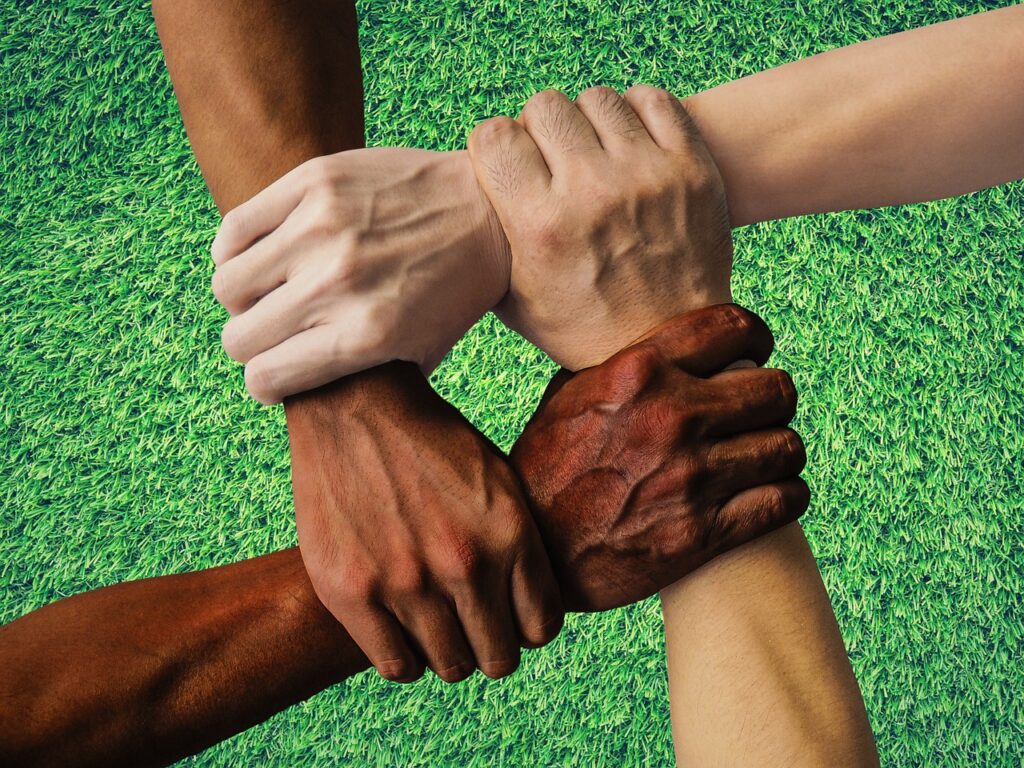Today’s blog

Lynn Murphy Mark
“The Sum of Us”
Last night our Racial Justice Learning Group, which has been going since August of 2020, finished a very powerful book. Heather McGhee is the author of “The Sum of Us” and she carried us into places and exposed us to facts that are living proof of racism in the USA. Some of it was hard to read because it exposed all the ways in which our society is deliberately constructed so that people of color have less of a chance to flourish.
I know there are white people who have it rough, and in many instances, the principles that created racism prevent them from getting the benefits of a wealthy society. However, it is not necessarily the color of their skin that gets in the way, unlike for people of color. We learned how our white privilege has benefited us, particularly in the basics of success in the USA: salary, housing, education, and opportunities.
Ms. McGhee talks about the “zero sum” principle and how it functions to keep certain groups from receiving the services that they need. The principle goes something like this: I believe that if all people get a share of the riches, then there will be less in it for me. This belief fosters a sense of fear and insecurity in me and I begin to find ways to divert the wealth in my direction. The book is full of examples of how this happens. One of the worst is called “red lining” where people in power establish regulations in certain neighborhoods that prevent selling homes to people of color. These neighborhoods are then occupied by white homeowners, white-run businesses, and the tax base is such that schools and other services are better than their counterparts in poor neighborhoods.
There was a time, decades ago, when large “public” swimming pools were built. The pools were segregated. White people alone had access to them. When there were judicial decisions that reversed this and opened the pools to all people, many municipal pools were filled with concrete and covered over rather than de-segregate the pools. This happened in communities all over the USA, including our own in St. Louis.
The book talks about the “Solidarity Dividend”, which is a term to describe the benefits of white people and people of color working together to make a change beneficial to all. She gives the example of neglected neighborhoods where immigrants move in and begin to make improvements. Sometimes if their white neighbors get involved to help, the neighborhoods come back to life. Often they become thriving locations in which to live and do business. She writes about the efforts of McDonald’s employees to bargain for better pay and working conditions – particularly about one woman who resisted being a part of a mixed group until she realized that all together they had greater bargaining power.
She writes about Medicaid expansion – where the Federal Government partially funds Medicaid and literally gives away the money to do that to the states. However, there is a persistent misbelief that Medicaid primarily benefits people of color, so governors and legislatures in primarily red states refuse to authorize Medicaid expansion. This affects all people who qualify for Medicaid. In Missouri, we the people voted to approve Medicaid expansion in 2020 and many of our Republican legislators fought it until October of 2021. The governor of Maine refused to approve it 5 times, even though his constituents who would have received the benefit are mostly white, poor people. Go figure.
Last night we decided that “The Sum of Us” is filled with so much information that it would merit re-reading. However, the learning continues with our new book, “So You Want to Talk About Race?”. That is the challenge facing us as we learn more about white supremacy and racism that affect all people in the United States. It takes courage and knowledge to speak out against racism. We’re getting there!
